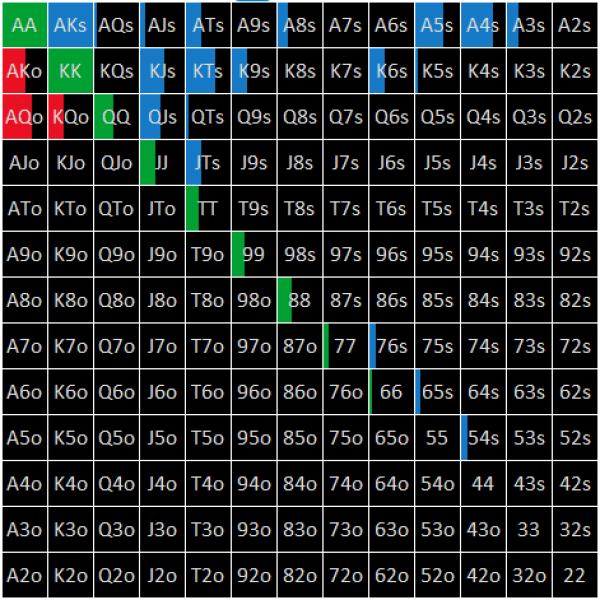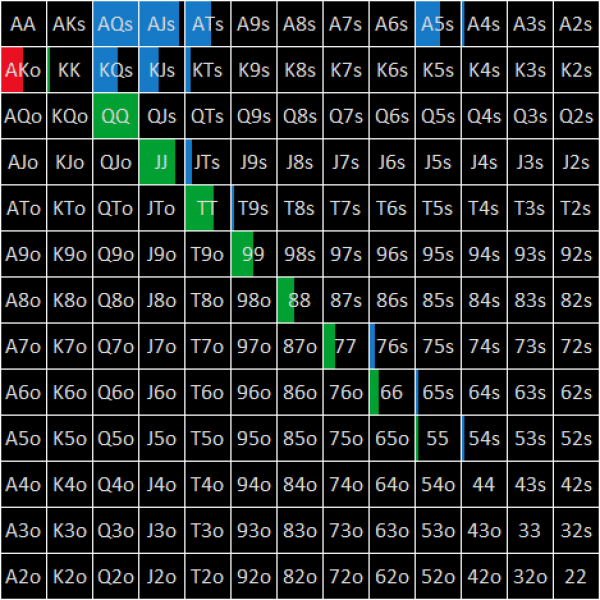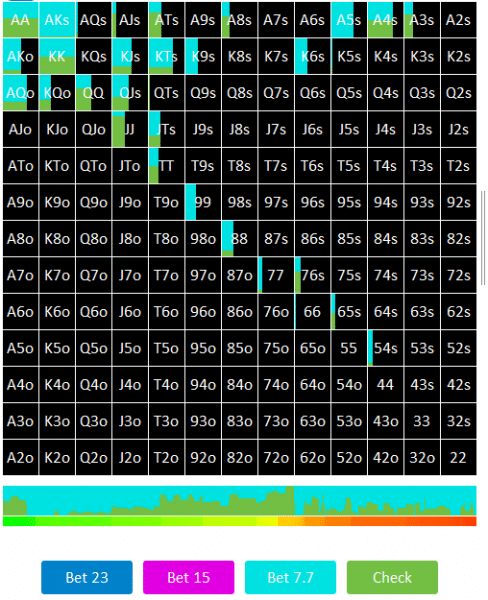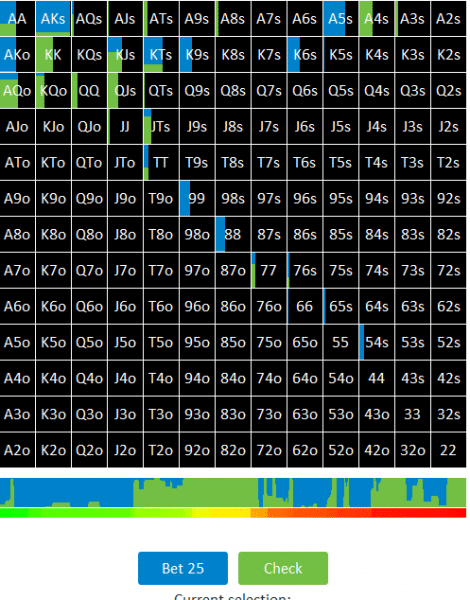Poker is a game of skill and strategy, and analyzing your hands is a critical part of improving your game. Whether you’re a beginner or a seasoned player, learning how to analyze your poker hands can help you identify mistakes, improve your decision-making, and ultimately win more at the table. In this article, we’ll explore the techniques and strategies that you can use to analyze your poker hands like a pro. Links to more detailed resources are included.
Hand History Reviews
One of the most effective ways to analyze your poker hands is to conduct a hand history review. This involves reviewing the hands you played in a particular session or tournament and analyzing the decisions you made at each stage of the hand. By reviewing your hands in this way, you can identify areas where you made mistakes, spot patterns in your play, and make adjustments for future games.
Sample Hand History Analysis
We analyzed a hand where we were unsure whether to bet the turn, and referred to our notes taken at the table to determine if we made an error.
We were playing $5/$10 on the button in this hand. The villain in the LJ (“lojack,” three off the button) opened for $40, and we 3-bet to $120. The LJ called. The pot is now $240, and the effective stacks are $850.
Before putting any chips in, we should have thought about the likely SPR (stack-to-pot ratio) and our range for making a 3-bet on the button. With our actual hand of AsQd, we have the kind of hand that we would frequently play this way.
Our range mostly consists of premiums, but we also have some suited wheel aces and some AKo, AQo, KQo. We have a credible threat on any board with enough middle pairs and little suited connectors.

We assume that our opponent has a range for a solid player, which we got from the Red Chip Poker ranges app. It’s an excellent place to start this analysis.

When the flop comes down Ac9s5h with our hand of AsQd, we consider big, medium, and small bets. We opt for a smaller bet size of $70 into $240. This is a c-bet after a 3-bet, and the board is high and dry. Our range screams “we have an ace,” while the opponent’s range is more around the dominated aces and set-mining hands.
We’re going to be c-betting about ⅔ of our range. We start with the nuts and work our way down. We check back about half the time with top set, as we have the deck crippled. Middle set is the biggest money maker, and we want to bet and stack someone with top pair. Two pair and TPTK (top pair, top kicker) are good for getting paid, while TPSK (second kicker) is where we slow down a little. Pocket pairs under the Ace are more for a “protection bet bluff.”

We did this hand analysis specifically to check our line. We see that betting AQo is good on the flop of Ac9s5h. There are some check-backs here also with AQo. Both options happen frequently, so we would be fine with either. They should both have the same EV in the end.
Looking at the whole range, we fire out about 80% of the time when we have garbage or backdoor draws. We can bet and lose three times and still break even if the opponent folds more than 25% of the time. This is the magic of a small c-bet, especially when we expect a decent amount of folds.
When the turn rolls for Ac9s5h-6h, we choose a bet size of 60% pot for $235. We expect the opponent to have either have top pair or an unimproved pocket pair given the action so far.

Sets, two pair, TPTK, are good for firing out with the likely best hand. The real question on the turn is with the marginal kicker of AQ. GTO tells us we do not keep going with bad kickers on the Ace.
We have a “nothing or the nuts on the river” set of bluffs with backdoor flush and straight draws when we semi-bluff the turn. This is the answer, and given the near 100% checking on AQo, we know we should have checked back the TPSK.
Overall, our analysis of this hand suggests that we played it well pre and on the flop. We had a clear plan pre-flop with a strong 3-betting range on the button. Our decision to c-bet on the flop with a small bet size was well thought out, as it allowed us to keep the pot small while still extracting value from our opponent’s weaker hands.
The turn is where things went wrong. But this is why we do off table analysis. Poker is a game of relative strength. Given the action, TPSK was not strong enough. On other boards and action, it might be.
Understand Opponent Tendencies
Understanding your opponent’s tendencies is another key aspect of analyzing your poker hands. By paying attention to the way your opponents play, you can identify patterns in their behavior and adjust your strategy accordingly. For example, if you notice that a particular opponent tends to bluff frequently, you can use this information to your advantage by calling their bluffs more often.
Study Hand Ranges
Hand ranges refer to the range of hands that your opponents could have based on their position and previous actions. By studying your opponent’s hand ranges, you can make more accurate decisions about how to play your own hand. For example, if your opponent is in an early position and raises preflop, their hand range is likely to be stronger than if they were in a late position.
By incorporating the GTO Ranges App into your game, you can gain valuable insights into your opponents’ tendencies and improve your decision-making at the table.
Use Tracking Software
Tracking software such as PokerTracker or Holdem Manager can be a valuable tool for analyzing your poker hands. These programs track your hand history and provide detailed statistics on your play, allowing you to identify patterns and make adjustments accordingly. Additionally, many tracking software programs provide real-time data on your opponents’ tendencies, allowing you to make more informed decisions at the table.
Take Notes
Taking notes on your opponents’ tendencies and behavior can also be a valuable tool for analyzing your poker hands. By recording your observations, you can identify patterns in your opponents’ play and adjust your strategy accordingly. For example, if you notice that a particular opponent always raises with a strong hand, you can adjust your play to avoid getting trapped.

Consider Your Position
Position is a critical factor in poker, and analyzing your position in each hand is essential for making informed decisions. By considering your position relative to your opponents, you can make more accurate decisions about how to play your hand. For example, if you are in a late position, you have more information about your opponents’ actions and can make more informed decisions as a result.
The preflop poker checklist can help you make more informed decisions and develop a more strategic approach to the game, ultimately leading to more profitable outcomes. Position is just the first item on the checklist.
Review Your Bet Sizing
Bet sizing is another crucial aspect of analyzing your poker hands. By reviewing your bet sizing in each hand, you can identify areas where you may have overbet or underbet, and make adjustments accordingly. Additionally, analyzing your opponents’ bet sizing can provide valuable information about the strength of their hand.
Pay Attention to Board Texture
Board texture refers to the way the community cards are arranged on the table. By paying attention to the board texture, you can make more informed decisions about how to play your hand. For example, if the board texture is very wet (i.e., there are many possible draws), you may want to be more cautious with your bets.
Practice, Practice, Practice
As with any skill, practice is essential for mastering the art of analyzing poker hands. The more you play, the more hands you’ll encounter, and the more opportunities you’ll have to analyze your play. Additionally, practicing with friends or in low-stakes games can help you refine your skills without risking too much money.
Learn from the Pros
Finally, learning from the pros can be a valuable tool for improving your hand analysis skills. Many professional poker players offer courses, books, and videos on hand analysis and other aspects of the game. By studying their strategies and techniques, you can gain valuable insights into the game and improve your own skills.
FAQ
- Why is hand analysis important in poker?
Hand analysis is essential in poker because it allows you to identify areas where you may have made mistakes and make adjustments for future games. Additionally, analyzing your opponents’ behavior and hand ranges can help you make more informed decisions at the table.
- How do I conduct a hand history review?
To conduct a hand history review, simply review the hands you played in a particular session or tournament and analyze your decisions at each stage of the hand. Look for areas where you may have made mistakes or could have made better decisions. Were you getting the hand ranges right for the opponent?
- How do I understand my opponent’s tendencies?
To understand your opponent’s tendencies, pay attention to the way they play and look for patterns in their behavior. Take notes on their betting patterns, bluffing frequency, and other relevant factors.
- What is a hand range?
A hand range refers to the range of hands that your opponents could have based on their position and previous actions. By studying your opponent’s hand range, you can make more accurate decisions about how to play your own hand.
- What is tracking software?
Tracking software is a program that tracks your hand history and provides detailed statistics on your play. It can help you identify patterns in your play and make adjustments accordingly.
- How do I take notes on my opponents?
To take notes on your opponents, simply record your observations about their behavior and tendencies. You can do this either by hand or using a software program.
- Why is position important in poker?
Position is important in poker because it gives you more information about your opponents’ actions and allows you to make more informed decisions as a result.
- What is board texture?
Board texture refers to the way the community cards are arranged on the table. By paying attention to the board texture, you can make more informed decisions about how to play your hand.
- How can I practice analyzing poker hands?
You can practice analyzing poker hands by playing more games and reviewing your play afterward. Additionally, practicing with friends or in low-stakes games can help you refine your skills without risking too much money.
- How can I learn from the pros?
You can learn from the pros by studying their strategies and techniques through courses, books, and videos. Many professional poker players offer resources on hand analysis and other aspects of the game.
